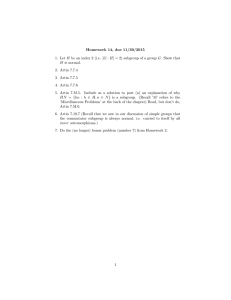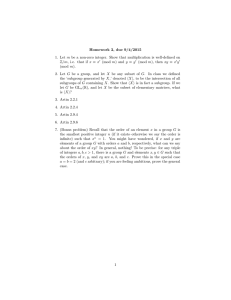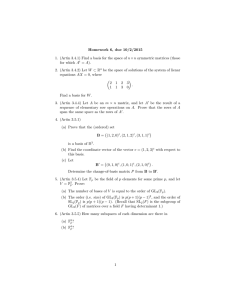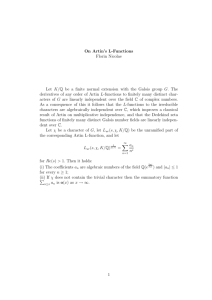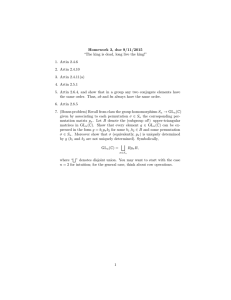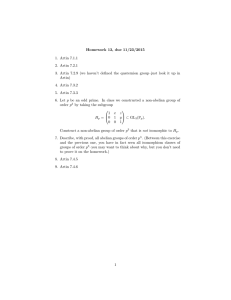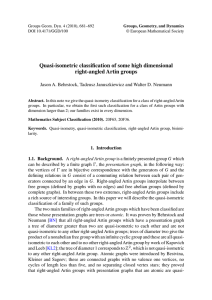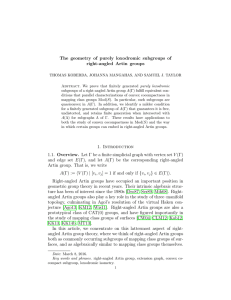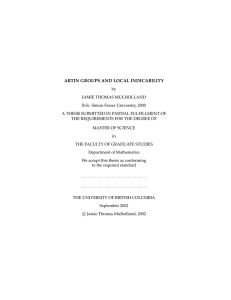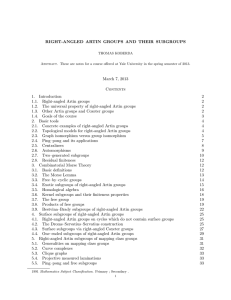Pries: 467 Abstract Algebra II, Spring 2013
advertisement
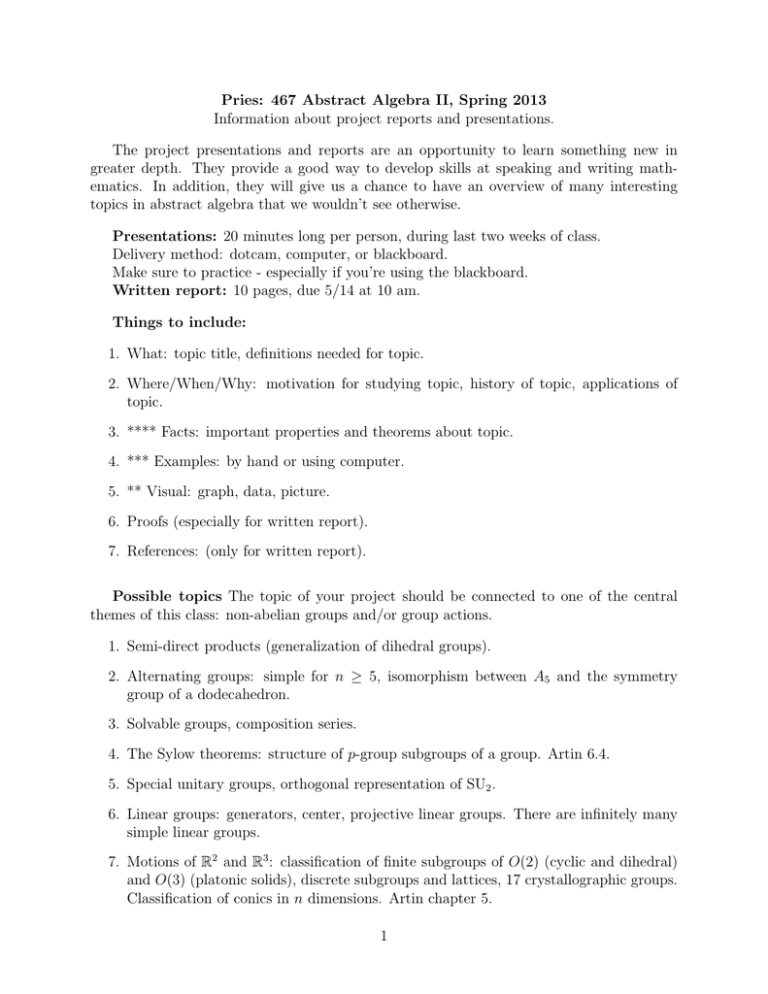
Pries: 467 Abstract Algebra II, Spring 2013 Information about project reports and presentations. The project presentations and reports are an opportunity to learn something new in greater depth. They provide a good way to develop skills at speaking and writing mathematics. In addition, they will give us a chance to have an overview of many interesting topics in abstract algebra that we wouldn’t see otherwise. Presentations: 20 minutes long per person, during last two weeks of class. Delivery method: dotcam, computer, or blackboard. Make sure to practice - especially if you’re using the blackboard. Written report: 10 pages, due 5/14 at 10 am. Things to include: 1. What: topic title, definitions needed for topic. 2. Where/When/Why: motivation for studying topic, history of topic, applications of topic. 3. **** Facts: important properties and theorems about topic. 4. *** Examples: by hand or using computer. 5. ** Visual: graph, data, picture. 6. Proofs (especially for written report). 7. References: (only for written report). Possible topics The topic of your project should be connected to one of the central themes of this class: non-abelian groups and/or group actions. 1. Semi-direct products (generalization of dihedral groups). 2. Alternating groups: simple for n ≥ 5, isomorphism between A5 and the symmetry group of a dodecahedron. 3. Solvable groups, composition series. 4. The Sylow theorems: structure of p-group subgroups of a group. Artin 6.4. 5. Special unitary groups, orthogonal representation of SU2 . 6. Linear groups: generators, center, projective linear groups. There are infinitely many simple linear groups. 7. Motions of R2 and R3 : classification of finite subgroups of O(2) (cyclic and dihedral) and O(3) (platonic solids), discrete subgroups and lattices, 17 crystallographic groups. Classification of conics in n dimensions. Artin chapter 5. 1 8. C[t]-modules (abelian group with action of C[t]). 9. Bilinear forms, symmetric positive definite forms, diagonalizing real symmetric matrix, orthogonal complements. 10. Hermitian forms, Hermitian matrices, unitary matrices, spectral theorem. 11. The Todd-Coxeter algorithm: using generators and relations for describing a group operation in terms of an action on cosets. Artin 6.9. 2

